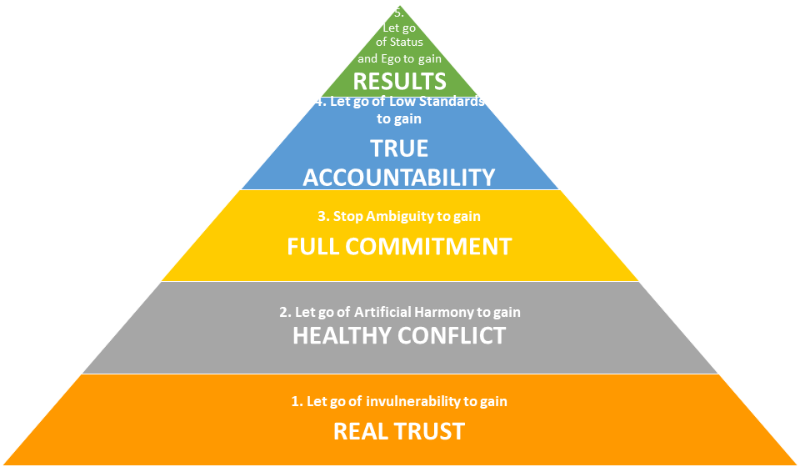
Sue Sharp and Meriel Swain
In his article “What is a healthy business?”, Darren Putt begins to explore the relationship between healthy people and healthy businesses. In particular, the notion that a business cannot be truly healthy without the presence of both a healthy business infrastructure and healthy people to work within it. We believe that there are some business activities that are crucial to the health of an organisation and are going to explore these in a series of articles. And in this second article, we are taking a look at healthy teams.
Your business is a whole team. It is made up of many interconnected teams. And to function effectively, all those teams need to work both individually and collectively. A person is a member of one team, which is part of another, and then another, and so on, until the whole is reached. Just like a human body...after all, that's where the word “Corporate” comes from. Corpus means body.
Perhaps the easiest place to start is to share our view of what a healthy team looks like. We draw heavily on the work of Patrick Lencioni, who is both a Management Consultant and an
Author and has done a lot of work around what makes a team effective.
The foundation for any team is a culture of safety and trust. It enables teams to have open debate, honest discussion and to resolve conflict healthily. When you have the psychological safety that all views are welcome, and all views are heard before deciding, then you gain team members' buy-in. When you have whole teams buying into a common vision, goal or idea, then there's an opportunity for everyone to hold themselves and everyone around them to account to achieve the agreed goals. When goals are aligned to the company vision there's a much greater chance of that vision being manifested and supported by the whole business.
So how will you know when your teams are struggling? Well funnily enough, you'll notice the opposite of all of those things we've just spoken about. From a behavioural perspective, there'll be conflict, individual agendas, sabotage within the team and ineffective intra-team collaboration. Lots of “I” conversations will be heard. Lack of buy-in, not knowing or understanding what the overarching themes and goals are for the team/company. There's likely to be tension: perhaps back-biting, passive aggressive behaviour or outright disagreements with no positive resolution. People may experience anger, sadness, stress, anxiety or resentment.
Your business data will also let you know that your teams are struggling. You'll likely have poor KPIs, with poor or no understanding of boundaries for tasks or roles. This may lead to missed deadlines or tasks that are either incomplete or incorrect. There'll be stress, absenteeism and attrition. Falling or low productivity. Too much bureaucracy. Either lack of or too tight controls. And possibly profitability issues. It's not a pretty picture.
Take a look at Lencioni's model of the Five Dysfunctions of a team and see whether you recognise any of these issues within your teams:
By now, you will know whether your business has healthy teams. And if it doesn't, what's the best course of action for you to take?
We can come and sit in one of your team meetings, do a ten minute assessment for your team, utilising Patrick Lencioni's model of The Five Dysfunctions, to give you an insight into if and where any of the Five Dysfunctions do exist. We will then work with you to design and deliver a bespoke programme to help you resolve the dysfunctions. We like to focus on what you already know, to acknowledge that there's wisdom in the room already. Our approach is to share with you the theory, and then apply that learning with you so that you collectively create an implementation plan that the whole team will back.
What might your business see if teams are moved into a position of good health?
Trust, psychological safety, the willingness to make mistakes and learn from them, debate, agreement and commitment to team purpose and goals, individuals who go above and beyond, a greater ease and confidence with working at all levels within the organisation, creativity, a focus on solving and moving forward rather than blockers. The business results when implemented effectively are likely to be better KPIs, goals that are seen as enjoyable challenges to reach, camaraderie, individuals looking out for and supporting each other, and teams that move forward together.
If you're wondering how to move from unhealthy to healthy team dynamics, here's how Lencioni suggests you address the Five Dysfunctions of a Team:
What might the return on my investment be of doing this work? Well that's a good question. ROI is a simple ratio of the gain from an investment relative to its cost. It's notoriously difficult to calculate when the indicators are behavioural. So you'll need to be looking at your business data across some of the areas we've suggested above.
The benefits are significant. At Motus Training, we inspire people and businesses to be healthy. Our corporate well-being programmes recognise that for individuals to be healthy, both the physical and mental/emotional elements must be present. Those are the elements which make up the human system. And for businesses to be healthy, it must have healthy teams, systems/processes, leadership, strategies, culture AND healthy people, to function optimally.
In our next article, we will be looking at systems and processes...the lifeblood of an organisation.
